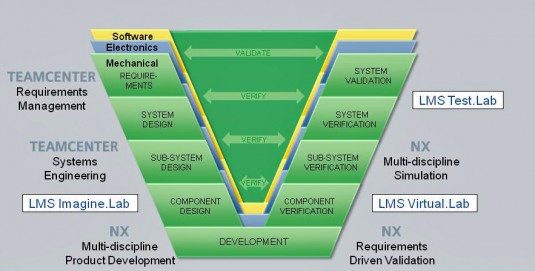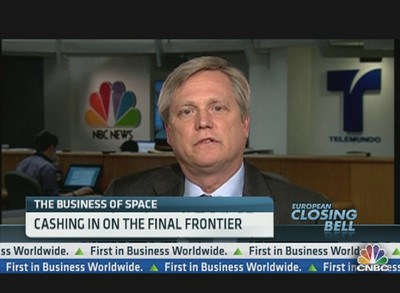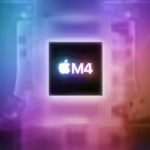“Synchronous” is not just a CAD technology but the guiding philosophy at the PLM leader and its soft-spoken CEO.
It was a soft-spoken but obviously proud Chuck Grindstaff who took to the podium as CEO of Siemens PLM Software at PLM World Monday in Dallas to brief the 2,000 attendees on the state of affairs at the PLM industry’s market leader. Siemens PLM employees are still basking in the reflected glory of the successful Mars Curiosity Rover mission, the most complex robotic space mission ever attempted. All the primary design work was done in Siemens PLM’s NX 3D CAD, and all the engineering was managed in Teamcenter, the company’s market-leading product lifecycle management platform. Despite nailing down competitive displacement wins in automotive the last few years, it seems there is still nothing like being part of a successful NASA mission to stir the heart and inspire employees.

Grindstaff used the relationship with Jet Propulsion Laboratory—the research arm of NASA in charge of unmanned space missions—to explain the state of his company’s products and future plans for their technology. The Curiosity mission was a state-of-the art blend of engineering expertise, complex customer requirements, multi-national collaboration, and intense external pressure to succeed. “Our vision is of a fully transparent and intuitive engineering process,” Grindstaff said, “with data gathered from multiple sources and filtered appropriately.” Siemens has adopted the V model of engineering processes to replace the circular model of PLM processes which at one time was used by both Siemens PLM and its largest rival Dassault Systèmes. It is a model of systems, subsystems, and components, design and validation from conception to manufacturing.

Grindstaff started with the company in 1978 when it was known as Unigraphics Solutions. He rose through the R&D ranks for a few years, and then departed in 1988 to be CEO of Waveframe, which developed digital signal processing systems for high-end motion picture applications. Grindstaff won a Scientific and Engineering Award from the Motion Picture Academy of the Arts and Sciences (the Oscar people) in the process. He returned to Unigraphics in 1994, just before the dizzying rounds of mergers, acquisitions and ownership changes (which would have been the undoing of some companies), leading to the acquisition by Siemens in 2007. By then Grindstaff was in the executive ranks, moving up to president in 2010 and replacing Tony Affuso (now board chairman) as CEO in 2011.

When Affuso was more in the public eye as CEO, he delighted in the occasional pointed jab at Dassault Systèmes. Grindstaff was more reserved; only industry insiders would recognize his discussion of “open engineering as our mantra” as being a slam at Dassault, which has a reputation for wanting to be the sole provider of proprietary software and services to its customers. “We seek standards that are common and expected to be encountered, and we use open interfaces and architectures to make our own products work,” said Grindstaff.
The synchronous path
In 2008 Siemens PLM introduced Synchronous Technology (ST), an approach to mechanical CAD software allowing the two separate disciplines of parametric, constraint-driven design (history) and direct modeling (history-free) to work side by side. The technology was introduced first in Solid Edge, the company’s mainstream engineering CAD product, but quickly adapted for NX. The process of adding ST into both CAD programs has been a multi-year methodical process of integrating the new processes of ST in stages; it is a process that is not yet complete. This year, with the release of NX 9 in September—the seventh ST update—ST will apply to 2D for the first time. At the session where ST for 2D sketching was introduced, at one point an NX user in the crowd blurted out, “Can we applaud now?” By a show of hands most of the 150 or so NX users in the crowd were using the current version of NX, and it was clear they were very happy to see the technology extended to 2D sketching.
The integration of ST into a history-based 3D modeler has been a methodical process; Siemens PLM has stated over and over how they are not interested in disrupting workflows for the sake of introducing new technology—another jab at competitor Dassault. In a session with press and analysts, Grindstaff took exception with the idea of replacing “PLM” as the catch-all term for engineering design software or moving beyond it as a path to growth. He contrasted the Siemens approach with current events at both PTC and Dassault. PTC is acquiring companies to position itself in adjacent markets to PLM, such as service management and embedded software management; Dassault is now branding its go-to-market strategy for engineering products and services as “3D Experience.” “We seek data stream matches and adjacencies,” said Grindstaff; “branching into services or procurement seems too far afield.”
Synchronous Technology is not the only transformative initiative at Siemens PLM that can be considered a work in progress. HD-PLM is about making all aspects of engineering visual and intuitive; Active Workspace is extending the reach of engineering to mobile devices. Both are following the synchronous path of incremental steady upgrades without disrupting existing workflow. It seems that under Grindstaff’s leadership, synchronous is more than a technology, but a philosophy guiding how the company works with its customer base.





